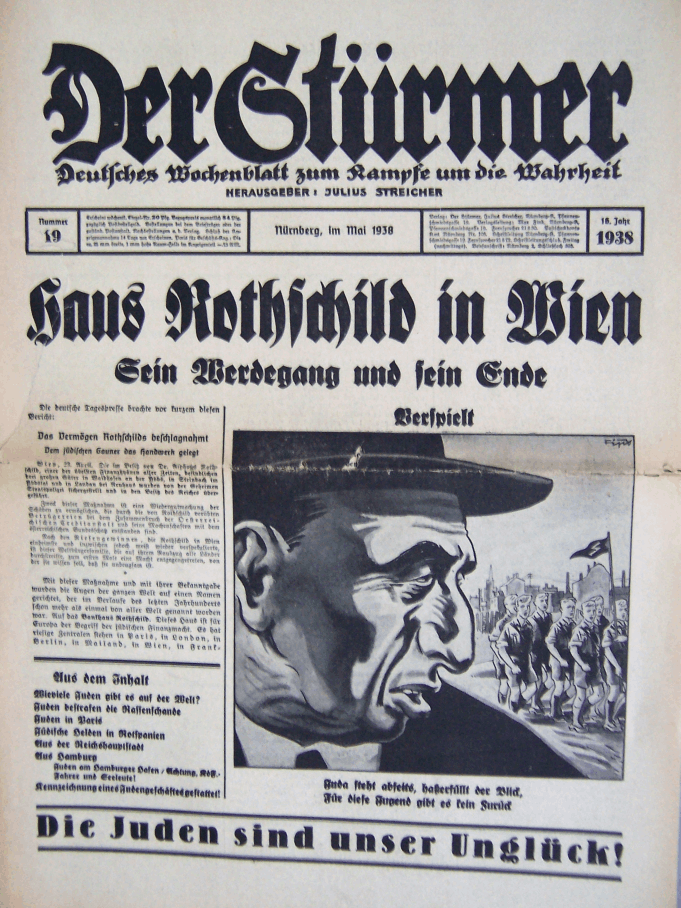
Hatred all around you
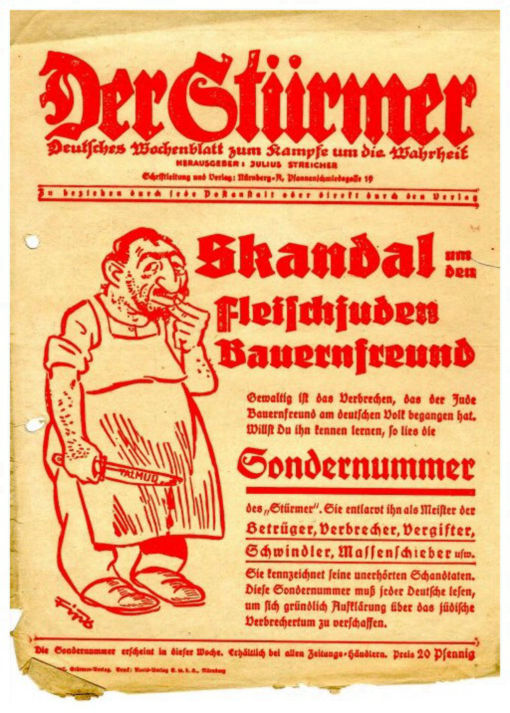
makes you believe it

Hatred all around you

makes you believe it
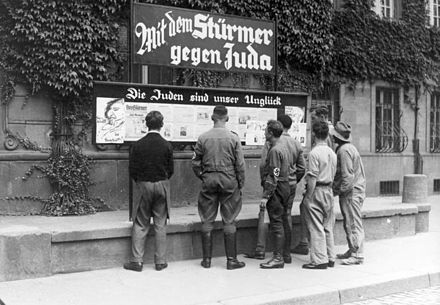
7.1 Legal discrimination
Key question: Did Nazi anti-Semitism change over time?
Base answer: yes, it became considerably stronger
Key dates:
First official boycott of
Jewish shops and professions 1 April 1933
Nuremberg Race Laws
introduced: 15 September 1935
A boycott of Jewish shops was organised
for April 1st 1933. Soldiers and members of the
Nazi party stood outside Jewish shops and tried
to persuade people not to use those shops on
those days.
However, it did not really succeed and many
Jewish shops were used as usual.
In addition, it was bad publicity for Germany
aboard as other countries could see that there
was anti-Semitic action.
Feelings of hopelessness were soon replaced by those of fear. To show sympathy for, or to protect Jews, was to risk one’s own freedom or one’s own life.
Der Stürmer was an anti-Semitic newspaper, pinned up all over Germany, spouting lies about the Jews. Propaganda against was no more obvious than this newspaper.
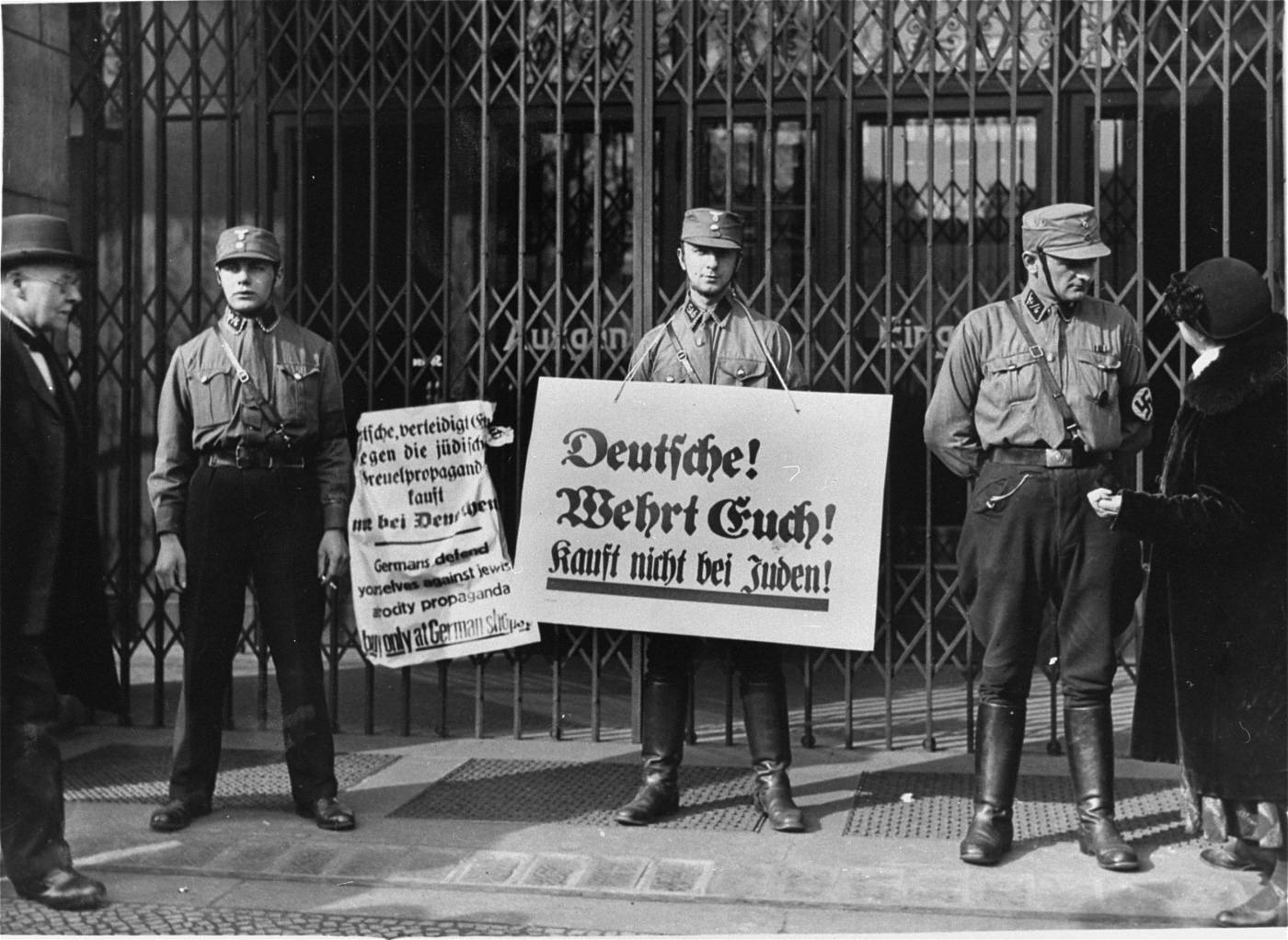
Radical Nazis wanted to take immediate action
against Jewish people and their businesses, but
even the party’s leadership was worried that it
could get out of hand - an uprising could easily
turn against any authority.
A one-day
national boycott was organised for 1 April 1933.
Jewish-owned shops, cafés and businesses were
picketed by the SA, who stood outside urging
people not to enter.
However, the boycott was not universally
accepted by the German people and it caused
a lot of bad publicity abroad.
The Nazi leaders developed their anti-Semitism
in a more subtle way. Once the Nazi regime had
established the legal basis for its
dictatorship, it was legally possible to
initiate an anti- Jewish policy, most
significantly by the creation of the Nuremberg
Laws in September 1935. This clearly stood in
contrast to the extensive civil rights that Jews
had enjoyed in Weimar Germany. The
discrimination against Jewish people got worse
as an ongoing range of laws was introduced. In
this way all the rights of Jews were gradually
removed even before the onset of the war.
Here’s an illustration showing the Anti-Semitic
Laws and their effects.
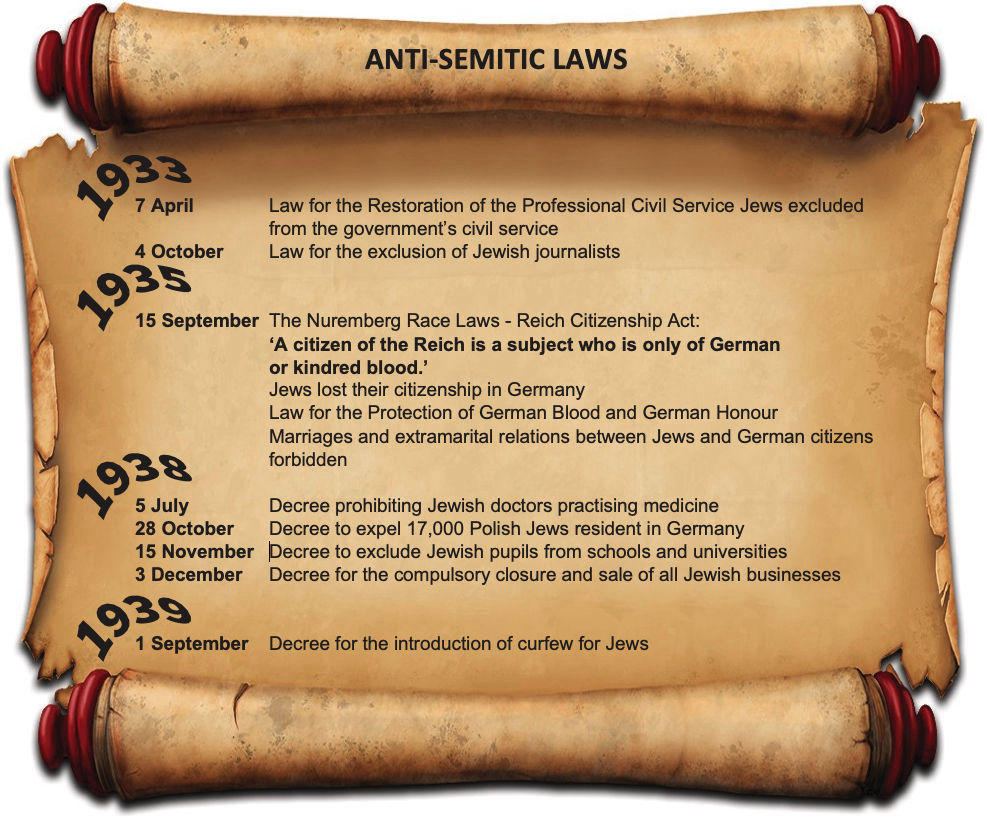
2.1 Propaganda and indoctrination
Nazism also set out to change people’s attitudes, so that they hated the Jews. Goebbels himself was a committed anti-Semite and he used his skills as the Minister of Propaganda and Popular Enlightenment to indoctrinate the German people.
All aspects of culture associated with the Jews were censored. Even more forceful was the full range of propaganda methods used to advance the anti-Semitic message, such as: posters and signs, e.g. ‘Jews are not wanted here’ newspapers, e.g. Der Angriff; Der Sturmer, edited by the Gauleiter Julius Streicher, which was very anti-Semitic with a seedy range of articles devoted to pornography and violence cinema, e.g. The Eternal Jew; Jud Süss.
An aspect of anti-Semitic indoctrination was
the emphasis placed on influencing German youth.
The message was put across by the Hitler Youth,
but all schools also conformed to new revised
textbooks and teaching materials, e.g. tasks and
exam questions.
2.1 Terror and violence - Key dates
Night of the Long Knives (murder of opponents): June 30–July 2 1934
Kristallnacht (Crystal Night), anti-Jewish pogrom: 9–10 November 1938
Creation of the Reich Central Office for Jewish Emigration: 1939
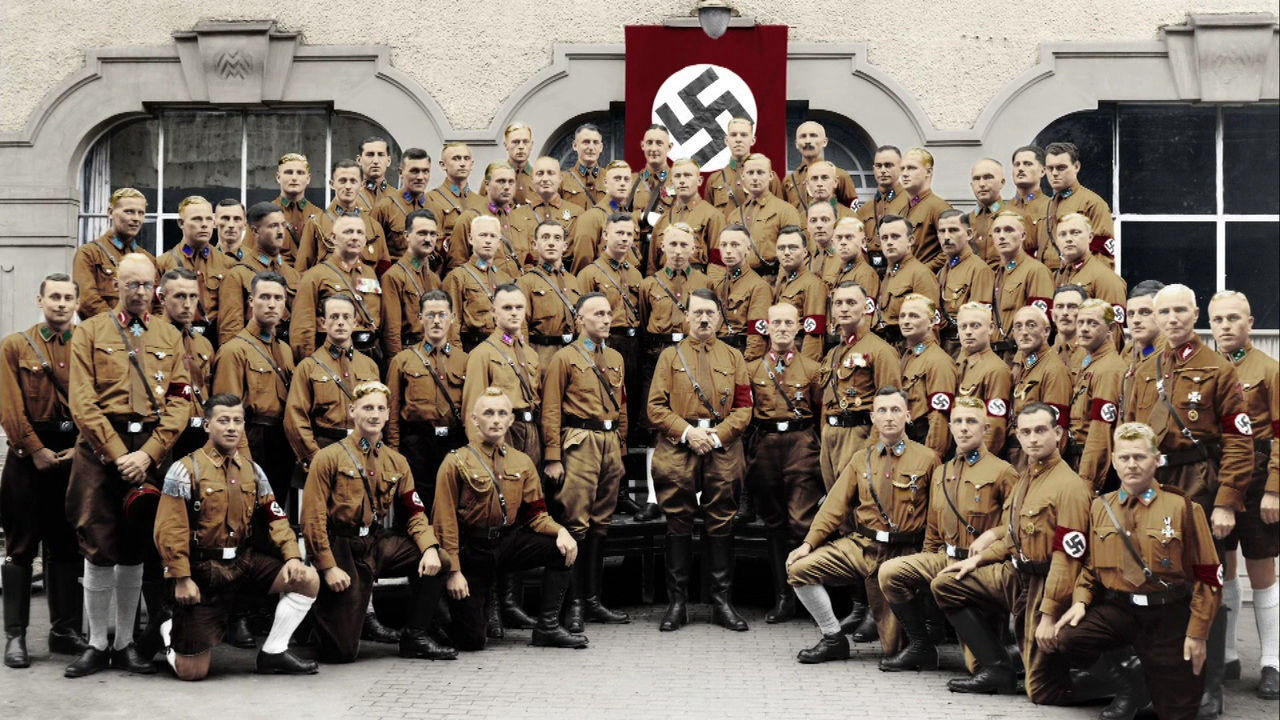
In the early years of the regime, the SA, as the radical left wing of the Nazis, took advantage of their power at local level to use violence against Jews, e.g. damage to property, intimidation and physical attacks.
After the
Night of the Long Knives in June
1934
(an organised execution of anyone thought to be
against Hitler), anti-Semitic violence became
more sporadic for perhaps two reasons.
First, in 1936 there was a decline in the
anti-Semitic campaign because of the Berlin
Olympics and the need to avoid international
alienation (see next page). Secondly,
conservative forces still had a restraining
influence.
The events of 1938 were on a different scale. The union with Austria in March 1938 resulted, in the following month, in thousands of attacks on the 200,000 Jews of Vienna.
In the Night of the Long Knives,
Ernst Röhm, Hitler’s best friend for
years, and 400 other Brown Shirts
and the leaders of the Brown Shirts
were murdered to consolidate
Hitler’s grip on power.
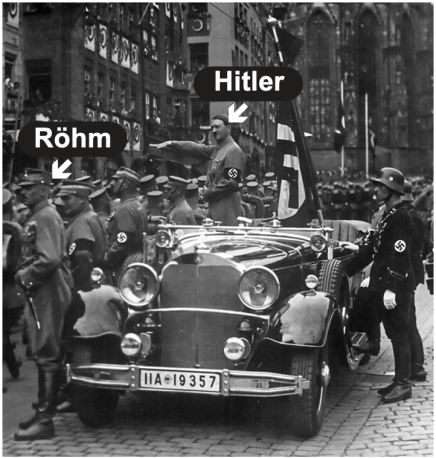
Anti-Semitism in Germany was becoming much worse and in 1938, on 9–10 November there was a ‘sudden’ violent pogrom against the Jews, which became known as the ‘Night of Crystal Glass’ (Kristallnacht) because of all the smashed glass.
Kristallnacht (Crystal Night) was ‘sudden’ - in fact someone was killed
and the murderer was supposed to have been a
Jew, but there was no proof at all that the
killer was Jewish. The incident was used as
an excuse to allow a violent, vicious,
destructive outburst against all Jews in the
country.
Not only were businesses targeted but homes
and Synagogues (Jewish places of worship).
Hundreds of people were either killed or
died afterwards or committed suicides.
Thousands of Jews were rounded up and put
into concentration camps.
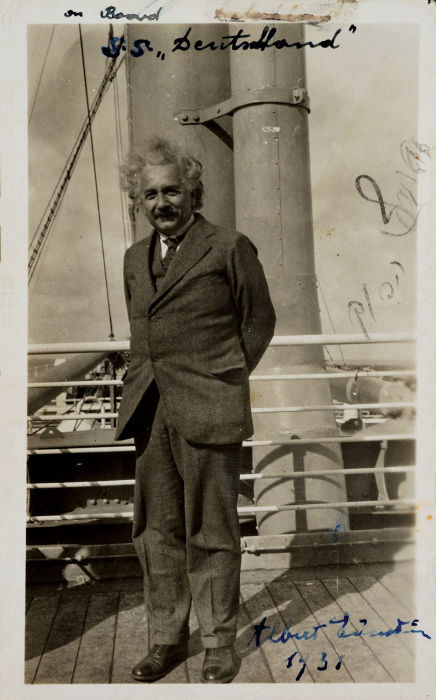
2.1 Forced emigration
From the start of the Nazi
dictatorship, many Jews with influence,
high reputation or
sufficient wealth could
find the means to leave. The most
popular destinations were
Palestine,
Britain and the
USA, and
among the most renowned émigrés was
Albert Einstein.
The Jewish community in Germany 1933–45
* The cumulative figure of Jewish émigrés
between 1933 and 1939 was 257,000.
